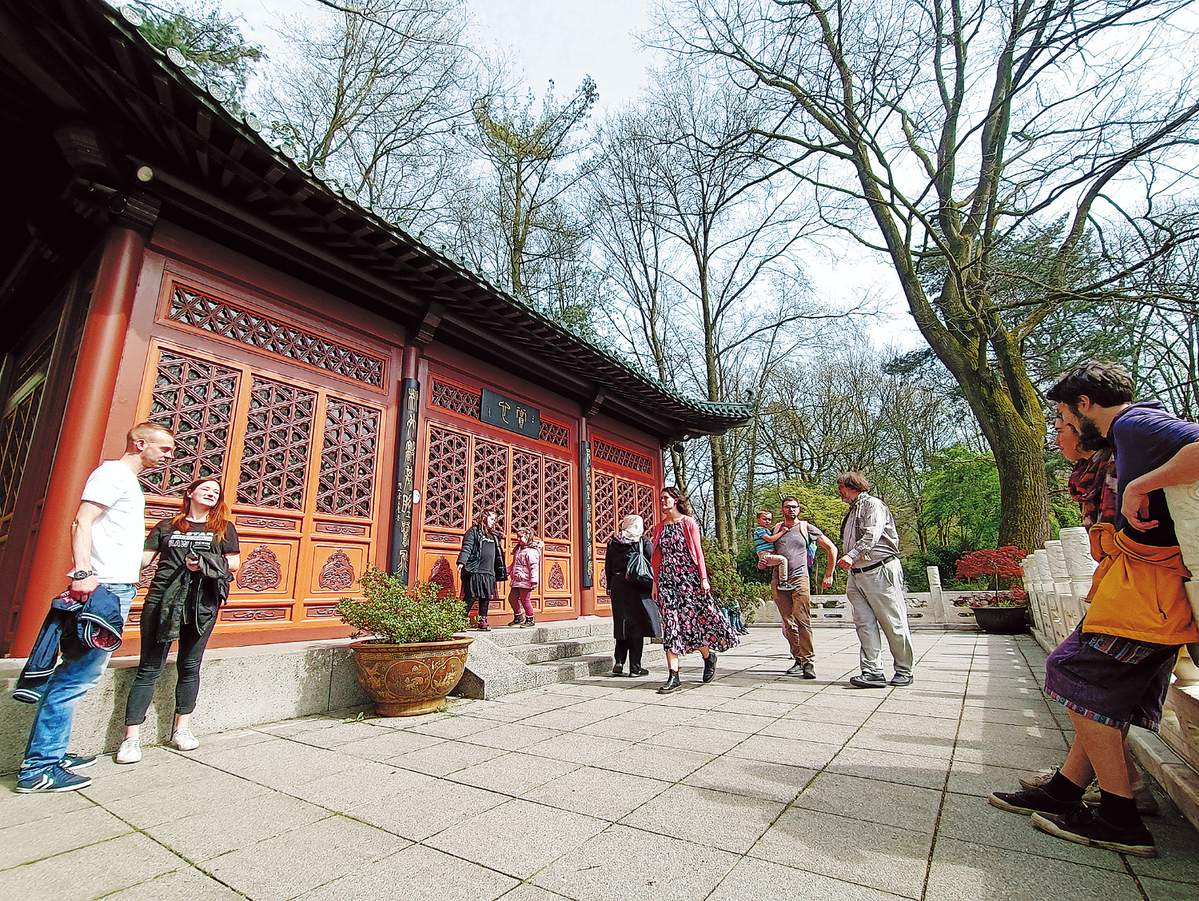Friendship blossoms in Chinese garden


Jiang Donghua, 67, has kept two gifts from Duisburg that he values a lot. A pair of gardening shears from an old friend remembering his participation in the construction of a Chinese garden in Duisburg decades ago, and a cup symbolizing the long-lasting friendship between China and Germany.
The retired landscaping worker at the garden construction company affiliated with the Wuhan Landscape and Ecology Group was a member of the Chinese team that went to Duisburg 37 years ago for the construction of Yingqu Garden in the Duisburg Zoo, which has stood as a symbol of friendship between the two cities.
Wuhan and Duisburg became sister cities in 1982, afterward, Wuhan decided to present Duisburg with a Chu-style garden. Nevertheless, the creation of the garden was a challenging endeavor. Originally constructed at the Wuhan Zoo, it was subsequently dismantled, packed into 14 containers and transported to Duisburg. Meanwhile, Wuhan sent a team of 10 people, including carpenters, construction workers, a painter, a design engineer, an interpreter and managers to Duisburg to assemble the garden.
Jiang remembered that they spent a total of 90 days in the German city.
"The people in Duisburg are exceptionally friendly, and the city was both beautiful and modern," he recalled. "The German craftsmanship spirit deeply touched me. It was truly an unforgettable experience that will stay with me for life."
The garden, spanning an area similar to that of a soccer field, showcases typical Chinese architectural features, including the prevalent use of mortise-and-tenon structures adorned with stone lions, pathways, waterways and rock formations. Within the garden, one can find a variety of plant species such as bamboo, weeping willows, water lilies, metasequoia and wintersweet trees, which represent Wuhan.
Upon its official opening to the public in 1988, the garden was enthusiastically embraced by the local community. According to official statistics, it currently attracts approximately 800,000 visitors annually.
























